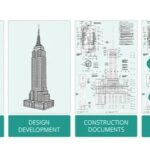Many years ago, when I first started working with Architects, Consultants, and Engineers (ACEs), I quickly realized that this community was almost impenetrable for a typical salesperson. They weren’t interested in sales pitches, and most of them actively avoided sales calls. What they valued were conversations with people who truly understood their world, people with a background in architecture, engineering, or consulting. They wanted to know that you could speak their language, grasp the intricacies of their work, and actually help propel their business forward, rather than waste their time with generic product pushes.
Over time, however, something shifted. Somewhere in the evolution of product manufacturing, A&E or ACE programs devolved from strategic, leadership-driven initiatives into what many organizations viewed as an extension of their sales teams. It makes sense, in a way: if all you know is sales, then every opportunity looks like just another sales tool. It’s the classic Maslow quote in action: “If the only tool you have is a hammer, you tend to see everything as a nail.” But here’s the problem, treating an ACE program like a sales function undermines its true potential. Yes, organizations need to sell to stay relevant, but an ACE program isn’t about short-term wins. It’s about building long-term partnerships and trust, which is a different game entirely.
Think of it like Aesop’s fable, “The Goose That Laid the Golden Eggs.” The moral is simple but powerful: don’t try to grab everything at once. The goose kept producing golden eggs, but only when it was well cared for. If neglected or “killed” (the relationship in this case) to get all the eggs at once, the golden eggs disappeared. The same applies to an ACE program. It’s not about instant results but nurturing relationships over time to produce consistent value, those golden eggs. A well-executed ACE program equips this community with the tools, knowledge, and support they need, and in return, it generates ongoing opportunities.
An ACE program doesn’t belong under the sales umbrella. Instead, it should complement sales, assisting the organization in identifying those golden eggs, long-term, high value projects, without the pressure of closing deals. After all, a program is defined as “a set of related measures or activities with a particular long-term aim.” It’s about multiple initiatives working toward a mutual goal: supporting architects, consultants, and engineers with the expertise and resources they need to succeed. Think of it as a program that supports programs, not a funnel-driven sales initiative. Sales teams, driven by short-term targets and immediate wins, aren’t wired for this kind of nurturing and that’s why a true ACE program, built on trust and strategic value, should stand apart from traditional sales efforts, designed for the long haul, not the quick hit. So, what makes up a program like this… Read The Book>>

